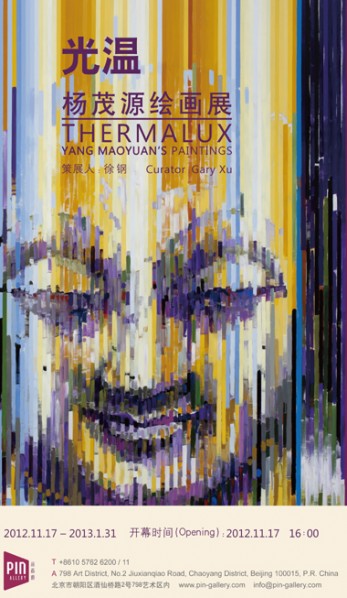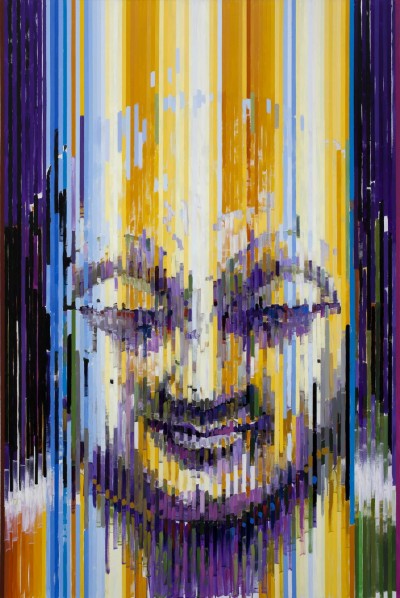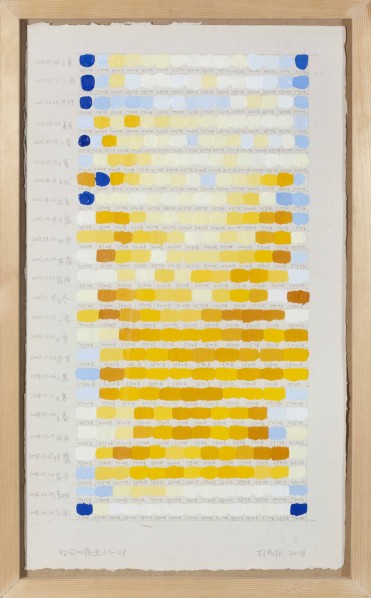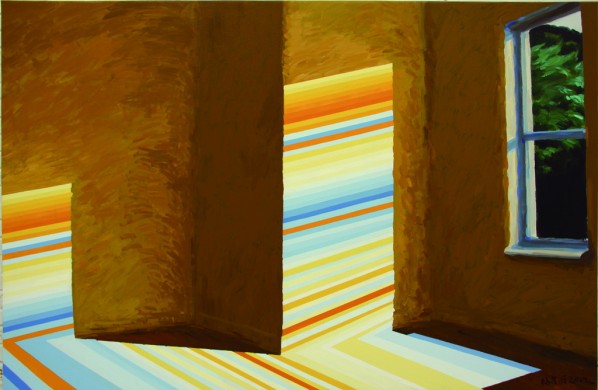
“Thermalux -Yang Maoyuan’s Paintings” hosted by PIN Gallery opened at 4: 00 pm, Nov. 17th, 2012. The curator of this exhibition is Gary Xu, Ph.D., Professor and Head of the Department of East Asian Languages and Cultures, University of Illinois, Urbana-Champaign. The exhibition will remain open till January 31st, 2013.
“Thermalux-Yang Maoyuan’s Paintings” shows the latest 13 works of Yang, including “Buddha,” “Silhouette,” “Venus,” “Empty Room” and other series. “Thermalux,” a word coined by Gary Xu based on the combination of two Latin roots meaning “temperature” and “l(fā)ight”, reflects Yang’s distinctive and personal creation method in measuring the temperature of light. In the 1990s, Yang once went into the innermost part of Taklimakan Desert to look for the ancient city of Loulan and he stumbled upon the Merdek Ruin, which had been found by archeologists before. This experience triggered his exploration about time and space. In measuring the temperature of light, he tries to make time visible.

Yang Maoyuan, "Buddha 1", 2012; Acrylic on canvas, 300x200cm

Buddha 3, 2012; Acrylic on canvas, 300x200cm
At any given moment within a day, there is a temperature index, which corresponds to one color in the light spectrum. The cooler the light temperature is, the darker the light color will be. Yang has been continuously measuring the temperatures of light from morning to evening for several years. By comparing the color spectrum, he drew the colors of time and accumulated a precious database of “l(fā)ight temperature.” Yang utilizes the colors of time to create the images of Buddha, which symbolizes the cyclical time and the rebirth of the world. The subtle relationship among time, temperature and color makes his portrait painting more complex and meaningful.
Gary Xu writes in the catalogue of the show, “Buddha lowers his head and closes his eyelids, partially because he is full of pities for the human sufferings, but also partially because he wants to hide away from the insatiable human desires. Yang Maoyuan uses the figures of Buddha to counter the contemporary hedonism. These pieces he newly created are the result of his constant return, mentally and physically, to the purity of the deserts during the past 25 years.”
Gary Xu thinks that Yang Maoyuan is “China’s Edward Hopper”: both hide the most intense feelings behind the tranquil scenes in their paintings and in a realism that can be fittingly called “psychological realism.” Yang Maoyuan uses the deep time as the central axle, reaching deep into his psyche for intricate emotional expressions and psychological realism. Unlike his hedonist contemporaries who live only in the present, Yang Maoyuan lives in the deepest of time: the past.

Traces of Time, 2008; Acrylic on paper, 57x33.5cm

Empty Room 2, 2012; Acrylic on canvas, 140x210cm
About Yang Maoyuan
Yang Maoyuan was born in 1966 in the city of Dalian City. He graduated from the Engraving Painting Department of Central Academy of Fine Arts and is currently based in Beijing. Yang works with a variety of media, including installation, painting, sculpture and photography. In 2002, he earned the CCAA China Modern Art Award. His work “Permeation” was exhibited in the 54th La Biennale di Venezia. His most recent solo show was held at Beijing’s Today Art Museum in 2010.
About the exhibition
Curator: Gary Xu
Date: 11/17/2012----31/1/2013
Address: 798 Art District, No.2 Jiuxianqiao Road, Chaoyang District, Beijing
Tel: 010-57626200/11
Courtesy of the artist and PIN Gallery.




























